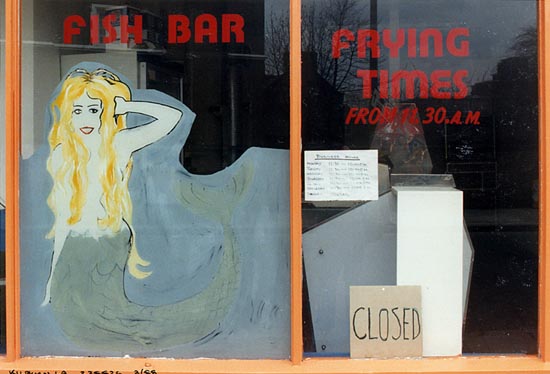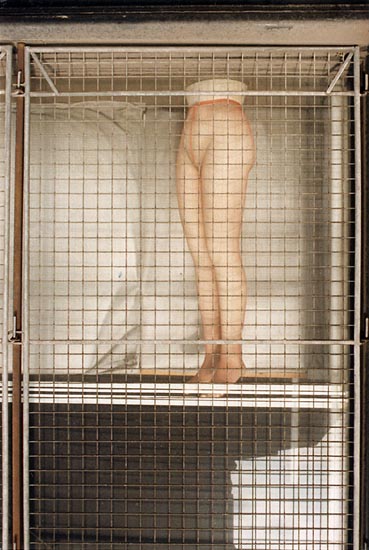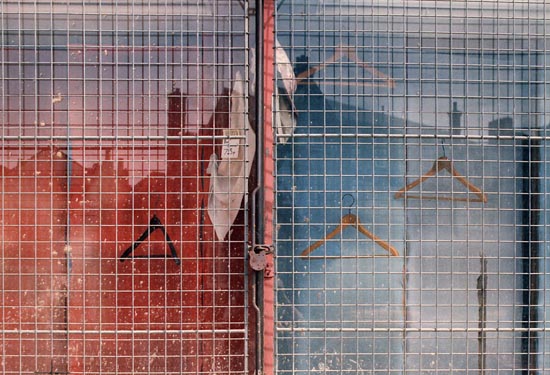A post in the L’Oeil de la Photographie sent me looking again at the work of Ralph Gibson, who has a show which opened a few days ago at the Mary Boone Gallery in New York, Political Abstractions. The show, which continues until Oct 31, 2015 consists of diptychs, pairs of images sometimes in colour and sometimes black and white. I’ve read the text in L’Oeil and in the gallery press release without getting a great deal of enlightenment, but you may do better than me.
One of the things that inkjet printing makes easier it printing a black and white and a colour image on the same sheet of paper, and most of the images on-line pair colour and black and white, though some use two black and whites, and I think one – on Gibson’s own site – has two rather similar colour images. But mostly the pairs seem fairly unrelated, with a few showing a similar line or shape (or pattern or shadow, according to the press release, which also has nice summary of Gibson’s signature “everyday objects isolated, strongly shadowed, and cropped so that they become potent and mysterious.”)
I fail to understand why Gibson terms these works ‘Political’, though the release states: “The subject of the work
becomes not the individual images, or their juxtaposition, but the act of looking” which may be behind the use of the term.
Early in my time as a photographer I became something of a fan of Gibson, and certainly made a few images that (for me at least) recalled some of his in the early 1970s, and my copies of his Lustrum trilogy, The somnambulist (1970), Deja-Vu (1973) and Days at Sea (1974) are dog-eared and falling to pieces. Though I’ve also been impressed at more recent shows and publications it sometimes feels that there is little new in his work. There is perhaps only a short divide between a style and a rut and sometimes I’m unsure which side of that distinction the newer work lies. But there are still images that Gibson produces that have a powerful resonance. Whether or not that is increased by pairing them I leave – like Gibson – to the viewer.

Kensal Green, 1988. Peter Marshall, from Café Ideal, Cool Blondes & Paradise
Ralph Gibson certainly encouraged my photography through his publications (including the other books from Lustrum as well as his) and also in person on the one occasion I showed my work to him, I think in 1988 when he had a London exhibition at the Photographers’ Gallery. Not just to him but at a public criticism to a crowded space in the gallery where I took up my portfolio with some trepidation, after he had been fairly tough on the work of a previous photographer. I’d taken colour prints – from the body of work that produced (among other things) my ‘Café Ideal, Cool Blondes & Paradise‘ and he spent some time looking through the book as I stood there shaking.

Shoreditch, 1986. Peter Marshall, from Café Ideal, Cool Blondes & Paradise
His comments and questions were fortunately both perceptive and positive and it was a great encouragement to me to continue that work.

Poplar, 1988. Peter Marshall, from Café Ideal, Cool Blondes & Paradise
______________________________________________________
My London Diary : Buildings of London : River Lea/Lee Valley : London’s Industrial Heritage
All photographs on this and my other sites, unless otherwise stated, are taken by and copyright of Peter Marshall, and are available for reproduction or can be bought as prints.
To order prints or reproduce images
________________________________________________________